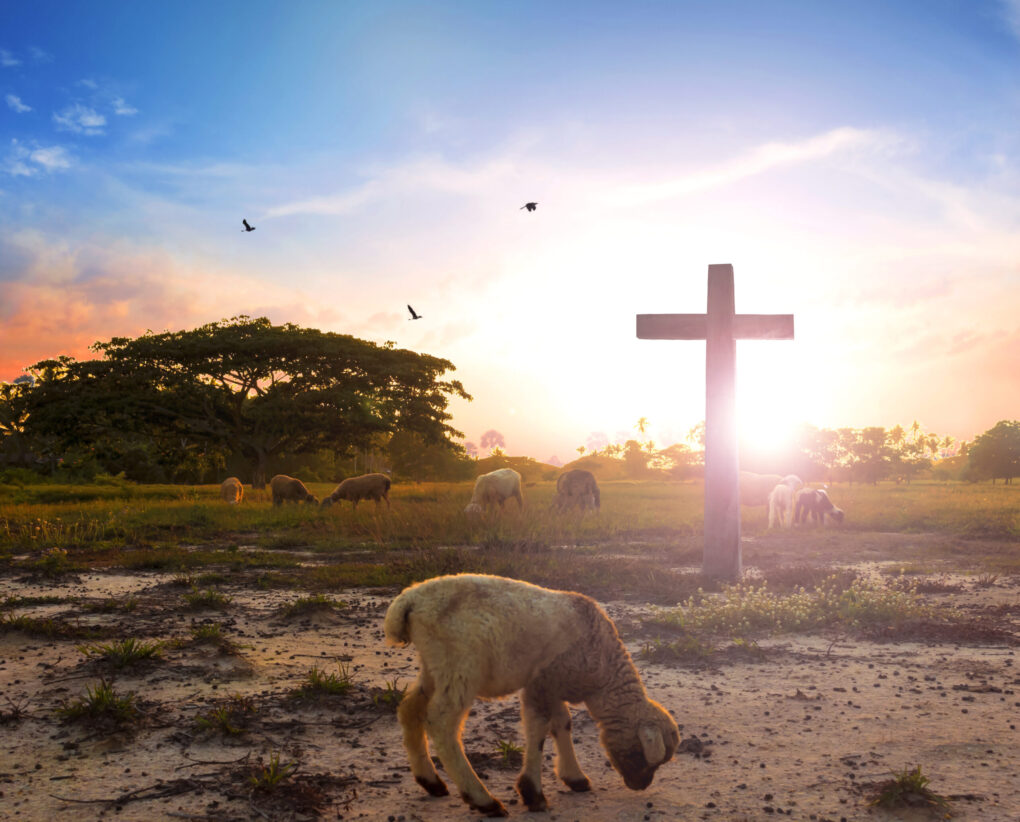The central theme of the readings today is the Lamb of God. Jesus is the true Lamb of God who takes away the sin of the world. A tourist visited a Church in Werner, Germany and was surprised to see the carved figure of a lamb carved on the bell tower of the church. He asked why it was there and was told that when the bell tower of the church was being built, a workman fell from a high scaffold. His co-workers rushed down, expecting to find him dead. But to their surprise and joy, he was alive and only slightly injured. How did he survive? A flock of sheep was passing beneath the tower at the time, and he landed on top of a lamb. The lamb broke his fall and was crushed to death, but the man was saved. To commemorate that miraculous escape, a fellow stone artist carved a lamb on the tower at the exact height from which the workman had fallen. — This statue of the lamb expresses a tiny bit of what John the Baptist means when he introduces Jesus to his disciples saying, “Behold, the Lamb of God Who takes away the sin of the world.”
In Gospel, John’s introduction of 'Lamb of God' portraits the five pictures of the “lamb” in the Jewish tradition. 1) The Lamb of Atonement (Lv 16:20-22). A lamb was brought to the Temple on the Day of Atonement (Yom Kippur). Placing his hands over its head, the high priest transferred all the sins of his people onto the animal. It was then sent into the forest to be killed by some wild animal. 2) The Lamb of Daily Atonement (Tamid [“standing,” perpetual, continual] Sacrifice) — (Ex 29:38-42; Nm 28:1-8). One lamb was sacrificed on the “Black Altar” of the Temple every morning and another was sacrificed every evening to make a continuous sacrifice in order to atone for the sins of the Jews. 3) The Paschal Lamb (Ex. 12:11ss), the blood of which saved the first born of the Jewish families in Egypt from the Angel of destruction. This lamb reminded them also of the Paschal Lamb which they killed every year on the Passover Feast. 4) The Lamb of the Prophets which portrayed One who, by His sacrifice, would redeem His people: “The gentle lamb led to the slaughterhouse” (Jer 11:19), “like a lamb to the slaughter” (Is 53:7). Both refer to the sufferings and sacrifice of Christ. 5) The Lamb of the Conquerors. This was the picture of a horned lamb on the Jewish flag at the time of Maccabaean liberation war, used as a sign of conquering majesty and power. The great Jewish conquerors like Samuel, David, and Solomon were described by the ancient Jewish historians as “horned lambs.”
We have another picture of Lamb of God. In the Eucharist, at “the breaking of the bread” we proclaim in word or song what the Baptist said. Our traditional fraction anthem is the Agnus Dei – “Lamb of God, who take away the sins of the world, have mercy on us/grant us peace.” In this prayer we give expression to our deepest understanding of the identity and purpose of Jesus Christ as our Lamb and Lord. By His life of love and sacrifice, we believe and affirm that He is the One Who was to come, came, and continues to come, into a broken world to take our sins upon Himself.
The first reading is taken from the “Songs of the Suffering Servant” in Isaiah, where the prophet was chosen by God from his mother’s womb and consecrated to be a “light to the nations.” Here, aspects of Jesus’ own life, as sacrificial lamb, and mission, as salvation of the world, are foreshadowed. The above is true indeed the life of Jesus.
In the second reading, Paul reminds the Corinthian Christians that they, like all who call on the name of Jesus, are “sanctified and called to be holy.” They are called by God and consecrated in Christ Jesus for a life of holiness and service. As believers, we too have been called by God to become members of Christ’s Body by our Baptism, and we are consecrated in Christ Jesus for a life of holiness and service. Only pure and holy lamb can become the sacrifice to God.
Jesus emptied himself and he saved the other by forgiving sins. He brought peace to others. He became the living and forgiving Lamb of God. Let us pray to God for heart which enables us to live like Jesus the Lamb of God.



No comments:
Post a Comment